#Automation in software development
Explore tagged Tumblr posts
Text
Abathur

At Abathur, we believe technology should empower, not complicate.
Our mission is to provide seamless, scalable, and secure solutions for businesses of all sizes. With a team of experts specializing in various tech domains, we ensure our clients stay ahead in an ever-evolving digital landscape.
Why Choose Us? Expert-Led Innovation – Our team is built on experience and expertise. Security First Approach – Cybersecurity is embedded in all our solutions. Scalable & Future-Proof – We design solutions that grow with you. Client-Centric Focus – Your success is our priority.
#Software Development#Web Development#Mobile App Development#API Integration#Artificial Intelligence#Machine Learning#Predictive Analytics#AI Automation#NLP#Data Analytics#Business Intelligence#Big Data#Cybersecurity#Risk Management#Penetration Testing#Cloud Security#Network Security#Compliance#Networking#IT Support#Cloud Management#AWS#Azure#DevOps#Server Management#Digital Marketing#SEO#Social Media Marketing#Paid Ads#Content Marketing
2 notes
·
View notes
Text
🚀 I Built AutoFillix – A Smart Chrome Extension to Autofill Forms Instantly
Like many developers, I was tired of filling out the same details over and over — name, email, phone number — every time I submitted a job form, Google Form, or sign-up page.
So I built AutoFillix, a smart and secure Chrome extension that:
Autofills common fields (name, email, phone, etc.)
Works on Google Forms and regular web forms
Stores your data locally (no login, no cloud)
Is completely free and easy to use
🔐 Why it’s different:
AutoFillix respects your privacy. Your data stays in your browser — nothing is sent to a server.
🧩 Try It Out:
👉 Install AutoFillix from the Chrome Web Store
💬 Feedback Welcome:
This is just the beginning! If you have suggestions or ideas, feel free to comment. 😊
#chrome extension#web development#programming#productivitytools#technology#software#student life#code#ai tools#automation
2 notes
·
View notes
Text

🚀 Transform Your Ideas into Reality with Codiastic Soft! 🚀
🌟 We are a professional mobile app development company dedicated to bringing your vision to life. Whether it's Android, iOS, Hybrid, or AI-powered apps, our expert team delivers innovative and high-quality solutions tailored to your needs.
💡 Our Services:
Android App Development
iOS App Development
Hybrid App Development
AI-Powered Mobile App Development
📲 Contact us today and let's innovate together! 🌐
📞 9284874955 | ✉️ [email protected] | 💻 www.codiasticsoft.com
#MobileAppDevelopment #AndroidApp #iOSApp #HybridApp #AIPoweredApp #AppDevelopment #TechInnovation #MobileSolutions #CodiasticSoft #InnovateTogether #TechSolutions #AppDesign #SoftwareDevelopment #DigitalTransformation #FutureOfApps
#automation services#mobile app company#mobile app design#software development#mobile app development#software services#website design#website development
7 notes
·
View notes
Text
FIRST PRIORITY IS YOUR HAPPINESS.
Techjour helps C-suite Executives to turn today's challenges into tomorrow’s opportunities. CXOs are busy in building their businesses while We have our set of solutions to offer for them. Team closely work with Clients from to understand requirements to deliver expected results. Among complex set of technologies, we assist Clients to decide number of technologies based on nature of application, their business growth and to reduce cost.

Consult us to discuss your requirements.
#ceo#technology#startup#automation#trendingnow#clientsatisfaction#happyclients#software development#customer experience#entrepreneur#business#digital strategy#techjour
2 notes
·
View notes
Text
Automated Testing vs. Manual Testing: Which One is Right for Your Project?

Achieving high-quality, reliable software stands as a fundamental requirement in software development. Successful testing functions as an essential tool to discover faults and build performance capabilities that create better user experience outcomes. Two main testing methods dominate the field: automated testing and manual testing. The process of quality software assurance uses different testing approaches that demonstrate their own advantages as well as weaknesses according to specific project requirements and scenarios. We will explore the specifics to determine which testing process works best for your system development efforts.
1. What Is Manual Testing?

Manual testing involves a human tester manually executing test cases without using automation tools. Key Characteristics:
The methodology focuses its efforts on user interface together with usability and experience testing.
Human-centered applications where selection requires discretion include ad hoc testing and enumerative testing as well as examinations that need human evaluation.
Human performers are required during this approach; thus, it demands substantial time.
2. What Is Automated Testing?
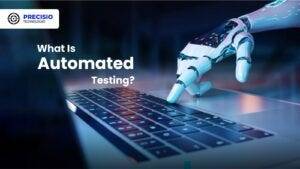
Software performing automated testing executes test cases through workflows and helpers. Key Characteristics:
Efficient for repetitive and regression testing.
Users must spend money on tools along with developing custom scripts for testing.
Reduces human error.
3. Advantages of Manual Testing

Human Intuition: Software testing professionals can detect kernels through their human cognitive ability that automated tools cannot match. The observation and evaluation of visual elements runs more efficiently through human operatives instead of advanced tools.
Flexibility: This method suits exploratory testing specifically because there are no pre-determined scripts available.
Low Initial Investment: Running this approach does not need tool purchases or applications to develop automation frameworks.
Adaptable for UI/UX Testing: Running this approach does not need tool purchases or applications to develop automation frameworks.
4. Advantages of Automated Testing
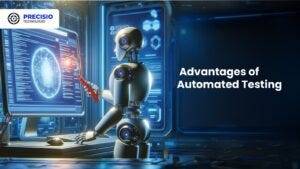
Speed: Executes repetitive tests much faster than humans.
Scalability: The system proves most effective for extensive projects that need constant system updates.
Accuracy: When performing recurring actions, automated systems minimize the chances of human mistakes.
Cost-Efficient in the Long Run: Once established and implemented, the system demands costly investments but ensures continuous development expenses decrease over time.
Better for CI/CD Pipelines: Such testing technology connects various development pipelines that support agile and DevOps methodologies.
5. Disadvantages of Manual Testing

Time-Consuming: The manual performance of repeated tests leads to delayed completion of projects.
Error-Prone: Large applications contain tiny bugs that human testers commonly fail to detect.
Not Ideal for Scalability: The process of increasing manual testing needs additional testers to avoid cost escalations.
6. Disadvantages of Automated Testing
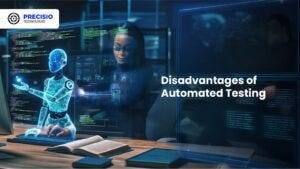
Initial Costs: Organizations must provide high financial resources to procure testing tools together with developing programming constructs.
Limited to Pre-Defined Scenarios: These testing approaches work poorly for handling exploratory or ad hoc testing.
Requires Maintenance: Test scripts need frequent updates when application changes occur.
Not Suitable for UI/UX Testing: Struggles with subjective user experience evaluations.
7. When to Use Manual Testing

Small Projects: The testing method proves beneficial at a low cost for small applications and provides quick assessments.
Exploratory Testing: Testing this approach benefits projects whose scripts have not been defined yet or need evaluation for newly added features.
Visual and Usability Testing: Performing assessments on interface components together with design features.
8. When to Use Automated Testing

Large Projects: Handles scalability for projects with frequent updates.
Regression Testing: Program testing becomes more efficient through automation since automated assessments perform multiple tests following each update process.
Performance Testing: The system performs efficient capabilities to conduct load testing and stress testing.
Continuous Development Environments: Agile progression and DevOps implementations need automation as a core requirement.
READ MORE- https://www.precisio.tech/automated-testing-vs-manual-testing-which-one-is-right-for-your-project/
2 notes
·
View notes
Text

𝐀𝐫𝐞 𝐘𝐨𝐮 𝐑𝐞𝐚𝐝𝐲 𝐭𝐨 𝐑𝐞𝐯𝐨𝐥𝐮𝐭𝐢𝐨𝐧𝐢𝐳𝐞 𝐘𝐨𝐮𝐫 𝐁𝐮𝐬𝐢𝐧𝐞𝐬𝐬? Discover Microsoft Dynamics 365 Business Central's game-changing power. 𝐃𝐢𝐬𝐜𝐨𝐯𝐞𝐫 𝟏𝟎 𝐠𝐚𝐦𝐞-𝐜𝐡𝐚𝐧𝐠𝐢𝐧𝐠 𝐟𝐞𝐚𝐭𝐮𝐫𝐞𝐬: ❇ Cloud-Based ERP ❇ Boosted Productivity ❇ Cost Avoidance ❇ Seamless Microsoft Integration ❇ Scalability ❇ Data-Driven Insights ❇ Simplified Customization ❇ Enhanced Employee Experience ❇ Revenue Growth Enablement ❇ Cost Transparency 𝗦𝘁𝗿𝗲𝗮𝗺𝗹𝗶𝗻𝗲 𝗼𝗽𝗲𝗿𝗮𝘁𝗶𝗼𝗻𝘀, 𝗮𝗺𝗽𝗹𝗶𝗳𝘆 𝗲𝗳𝗳𝗶𝗰𝗶𝗲𝗻𝗰𝘆 𝗮𝗻𝗱 𝗽𝗿𝗼𝗽𝗲𝗹 𝗴𝗿𝗼𝘄𝘁𝗵!
#DigitalTransformation#data analytics#custom software development#cloudcomputing#it consulting#artificial intelligence#automation#datascience#transformation
2 notes
·
View notes
Text
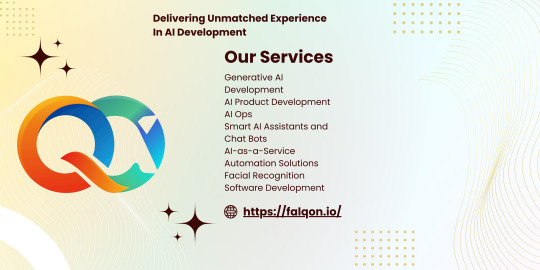
artificial intelligence| ai development companies| ai in business| ai for business automation| ai development| artificial intelligence ai| ai technology| ai companies| ai developers| ai intelligence| generative ai| ai software development| top ai companies| ai ops| ai software companies| companies that work on ai| artificial intelligence service providers in india| artificial intelligence companies| customer service ai| ai model| leading ai companies| ai in customer support| ai solutions for small business| ai for business book| basic knowledge for artificial intelligence| matching in artificial intelligence|
#artificial intelligence#ai development companies#ai in business#ai for business automation#ai development#artificial intelligence ai#ai technology#ai companies#ai developers#ai intelligence#generative ai#ai software development#top ai companies#ai ops#ai software companies#companies that work on ai#artificial intelligence service providers in india#artificial intelligence companies#customer service ai#ai model#leading ai companies#ai in customer support#ai solutions for small business#ai for business book#basic knowledge for artificial intelligence#matching in artificial intelligence
2 notes
·
View notes
Text
Oh boy, it's the weekend. I've been coding all week! Time to do something else.
Ends up working on a personal coding project.
#flowery rambles#software development#It's addictive at this point#Because coding is like magic. You put in a few lines of logic and POOF#so much gets automated. It's truly fascinating#also I should probably be studying for my math exam on Monday but no need to look into that
2 notes
·
View notes
Text
How AI is Redefining Team Dynamics in Collaborative Software Development
New Post has been published on https://thedigitalinsider.com/how-ai-is-redefining-team-dynamics-in-collaborative-software-development/
How AI is Redefining Team Dynamics in Collaborative Software Development
While artificial intelligence is transforming various industries worldwide, its impact on software development is especially significant. AI-powered tools are enhancing code quality and efficiency and redefining how teams work together in collaborative environments. As AI continues to evolve, it’s becoming a key player in reconfiguring team dynamics, enhancing productivity, and streamlining communication. This article explores how AI redefines team dynamics in collaborative software development, unlocking new ways of working and shaping the industry’s future.
The Shift to AI-Augmented Development
In the past, software development relied heavily on human expertise at every stage, from design and coding to testing and deployment. While this traditional approach has driven significant progress, it faces bottlenecks, including inefficiencies, communication barriers, and human errors. Recent advancements in AI, however, are offering intelligent solutions that effectively address these challenges, transforming how development teams operate.
AI-augmented development redefines team collaboration by automating routine tasks such as bug detection, code reviews, and version control. By handling these repetitive tasks, AI allows developers to focus on more complex, higher-order problems, improving their productivity and efficiency. This automation also promotes effective collaboration by minimizing bottlenecks and reducing the need for constant manual intervention.
In addition, AI-powered tools like GitHub Copilot and DeepCode are helping developers to write code cleaner and faster. These tools provide real-time suggestions, enabling teams to maintain consistent coding standards across multiple developers. This reduces team friction and creates a more harmonious work environment, enabling junior developers to work independently while following best practices.
Enhancing Cross-Functional Collaboration
AI’s impact goes beyond just coding; it’s becoming vital for enhancing collaboration among teams, especially in agile development environments. Software development relies heavily on teamwork, shifting responsibilities between developers, testers, product managers, and business users. These teams must interact and communicate effectively to achieve their shared goals. AI tools are helping to break down the traditional silos that often get in the way of effective communication.
For instance, AI-driven project management platforms like Asana and Jira optimize task allocation by analyzing team performance and identifying skill gaps. These platforms predict potential roadblocks and suggest workflows that ensure tasks are assigned to the most appropriate team members, improving project outcomes. AI also assists in forecasting timelines, reducing project delays, and providing data-driven insights that help team leaders make more informed decisions.
Furthermore, AI’s natural language processing (NLP) capabilities enable more effective communication between technical and non-technical team members. AI-powered chatbots and virtual assistants can now interpret technical jargon and translate it into language that product managers or clients can understand. This communication mechanism creates a more inclusive team environment where everyone is on the same page, regardless of their technical expertise.
Boosting Remote and Distributed Teams
In today’s globalized world, remote work has become the norm for many software development teams. Distributed teams often face challenges related to communication, coordination, and maintaining productivity across time zones. AI is crucial in bridging these gaps and ensuring that remote teams remain as effective as co-located ones.
AI-powered collaboration tools like Slack and Microsoft Teams incorporate features that help manage distributed workforces. These platforms utilize AI to analyze communication patterns, flag potential miscommunications, and suggest the best meeting times based on team members’ availability across different time zones.
Additionally, AI is transforming code review processes for remote teams. Tools like Codacy and CodeClimate use machine learning algorithms to automate code reviews, ensuring that teams follow best practices even when senior developers are not immediately available for oversight. This mechanism accelerates the review process and maintains consistency in code quality merged into the project.
AI also helps maintain team bonding in a remote setting. AI-powered sentiment analysis tools can monitor communication channels, identifying signs of burnout or disengagement among team members. These insights allow managers to intervene early and provide support, ensuring remote teams remain motivated and productive.
AI and Continuous Integration/Continuous Delivery (CI/CD)
One of the most significant shifts AI drives in team dynamics is in continuous integration and continuous delivery (CI/CD). AI-powered tools enhance CI/CD pipelines by automating various aspects of the software development lifecycle, from testing to deployment.
Traditionally, teams invested significant manual effort in managing CI/CD pipelines to ensure they tested, integrated, and deployed code changes without disrupting the system. However, AI automates these processes, allowing teams to implement changes more frequently and confidently. Tools like CircleCI and Jenkins now integrate AI algorithms that predict the success of builds, identify failure points, and optimize deployment strategies.
AI-driven CI/CD fosters better collaboration among developers and operations teams (DevOps). By automating routine deployment tasks, AI allows DevOps teams to focus on strategic improvements and infrastructure scalability instead of constantly dealing with deployment issues. This enhances the synergy between development and operations teams, creating a more cohesive workflow that aligns with the project’s broader goals.
Democratizing Software Development
As AI increasingly integrates into collaborative development environments, software development becomes more accessible to everyone. AI-powered low-code and no-code platforms are allowing non-developers to contribute to software projects in ways that were previously impossible.
Platforms like OutSystems and Appian use AI to guide users through the software development process, enabling business analysts, project managers, and clients to create functional applications without extensive coding expertise. This democratization shifts the traditional dynamic of software teams, where developers are the sole gatekeepers of technical knowledge. Now, diverse teams can actively participate in the development process, contributing to innovation and bringing new perspectives.
These developments have also led to the rise of “citizen developers,” who can quickly prototype ideas, test them, and iterate without relying on professional developers for every process step. This evolution speeds up the innovation cycle and allows software development teams to focus on refining and scaling ideas rather than being bogged down by the initial stages of development.
AI as a Team Member: The Rise of AI Pair Programming
One of the most fascinating developments in AI-assisted software development is the concept of AI as a virtual team member. AI pair programming, where a human developer collaborates with an AI tool to write and review code, is gaining traction. GitHub Copilot, for example, uses OpenAI’s Codex model to assist developers by suggesting code completions, functions, and entire blocks of code based on context.
AI pair programming tools are not just passive assistants; they actively participate in the development process by learning from past codebases and user interactions to provide increasingly accurate suggestions. This evolution fundamentally changes how developers interact with their work, reducing cognitive load and allowing them to focus on more complex, creative tasks.
AI is changing traditional team dynamics by being a constant collaborator. It is reducing the need for junior developers to rely heavily on senior colleagues for guidance. AI tools can now provide that guidance in real time, helping to level the playing field and accelerate the onboarding process for new team members.
The Bottom Line
AI is not just a tool for improving efficiency; it fundamentally reshapes how teams collaborate and innovate in software development. By automating routine tasks, enhancing cross-functional communication, and enabling more inclusive and democratized development processes, AI is setting the stage for a new era of teamwork.
As AI continues to advance, the future of collaborative software development looks promising. Human creativity and AI-driven automation will work together to unlock new levels of productivity and innovation. Teams will be able to confidently tackle increasingly complex projects, knowing that AI is there to support them at every turn.
#agile#Agile Development#ai#AI for bug detection#AI for code quality#AI in agile development#AI in software development#AI in team collaboration#AI pair programming#ai tools#AI-driven project management#AI-powered#Algorithms#Analysis#applications#approach#Article#artificial#Artificial Intelligence#Asana#automation#Automation in software development#bug#burnout#Business#chatbots#CI/CD#Citizen Developers#code#Code Review
0 notes
Text
"Code is read much more often than it is written." - Guido van Rossum
#poetry#programming#code#developers#art#aesthetic#books & libraries#comics#gaming#music#writing#video games#software#automation#apps#development#softwaredevelopment
2 notes
·
View notes
Text

Discover the comprehensive services offered by Codiastic Soft! 🌟 From web development and UI/UX design to mobile app development and RPA-based automation solutions, we provide everything you need to innovate and grow your business. Let's build something amazing together!
📞 9284874955 | ✉️ [email protected] | 🌐 www.codiasticsoft.com
#WebDevelopment #MobileAppDevelopment #UIUXDesign #AutomationSolutions #RPATechnology #DigitalTransformation #CodiasticSoft #InnovateTogether #TechSolutions #BusinessGrowth
#automation services#mobile app company#mobile app design#mobile app development#software development#software services#website design#website development
2 notes
·
View notes
Text
Why I Love Get By Text
I have a confession: I've been writing browser tests lately, and my preferred approach to locators is becoming get by text or get by label.
I am aware that some of you might want to throw some full wine bottles at me now. But I stand by it.
Over the course of my career as a test automation specialist, I've worked with a bunch of web applications for which I automated browser tests. One of the most critical aspects of writing browser tests is finding good locators to hook into in order to drive the application. Naturally, since there are plenty of options there are also plenty of opinions on what kind of locator strategies to use. Typically these follow some kind pattern like this;
Use id attributes that are permanent, if you can. If you can't, then
Use data-testid or other custom attributes specifically for automation if you can. If this isn't an option then
Use class attributes, which tend to be stable. If you can't do this, then
Use CSS properties to specify elements. And if all the above aren't options, then
Use text or xpath locators or something and hope for the best.
Generally patterns like this are a good heuristic for identifying locators. However, the nature of front-end web applications has gradually changed over the past decade. Most front-ends are now generated through frameworks and not through hand-written HTML, CSS and JS. A result of such frameworks is that elements aren't always able to be directly manipulated by developers, and you need to rely on the capabilities of the framework. Browsers (and computers more generally) have gotten faster and more efficient. And lastly, tooling has evolved greatly for browser automation. Selenium WebDriver is a web standard now, and there's lots of other tools that can be used.
Based on all this progress, one would imagine that there's been progress on how to choose or use locators well with modern and maybe less-modern web apps and pages. One would be, I think, disappointed to find out there hasn't been much progress here. Finding and maintaining locators is pretty similar to how things looked many years ago. Front-end developers still hesitate to add custom attributes for testing sometimes. Newer web frameworks dynamically create elements, so id attributes are either not present or not reliable enough for automation. No one understands CSS, still.
What to do based on this state of affairs? I've been using Playwright lately for browser automation, and Playwright provides a getByText() method for finding elements. I started using it out of convenience at first and, well, I'm convinced it's a good approach. Why? Because - frankly - it works well.
The thing about text in web applications, whether that be labels next to inputs or placeholder text, is that it's actually fairly stable. Most buttons with the text Submit will continue to have the text Submit for a long time. And if the text does change on an element it is straightforward and obvious to update your tests. Plus, text doesn't tend to go away: moving from Angular to React to Vue to Svelte still means your Name field has a label of "Name" that end users will see.
One big objection to using text is localization internationalization, which can be a valid point. However, if your web app has five options for language, does that mean the logic and workflows change as well? They might, but if they don't, you can likely test one language and still feel confident in the test results. If you can't use text-based locators, then you'll have to evalutate your strategy anyway.
I am a big fan of the adage "What's the simplest thing that could possibly work". When it comes to finding elements by text, this advice seems to hold true.
0 notes
Text
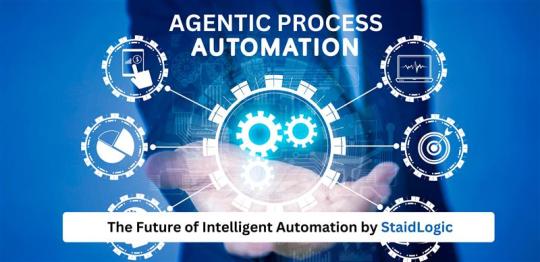
StaidLogic is an Information Technology Solutions and Services provider, helping organizations improve productivity by enabling digital and cloud transformation and by enabling process optimization with an unparalleled degree of agility.
#information technology#awscloud#software#testing#software development#app development#automation#digital marketing
0 notes
Text
The Importance of Independent Testing Services for Modern Software Delivery
Independent Testing Services: Why They Matter for Reliable Software Delivery
In today’s competitive digital landscape, delivering high-quality, reliable, and secure software is essential for businesses of all sizes. One of the most effective ways to ensure this is by investing in independent testing services. Unlike in-house testing teams, independent testers provide unbiased quality assurance, bringing a fresh perspective and specialized expertise to the software testing process.
In this article, we’ll explore what independent testing services are, their key benefits, and why partnering with a professional independent testing provider can add significant value to your software development lifecycle.
What Are Independent Testing Services?
Independent testing services involve engaging a third-party organization or team to assess, validate, and verify your software applications. These services operate separately from the development team, ensuring an objective evaluation of the product’s functionality, performance, security, and usability.
Independent testers follow industry-standard methodologies, frameworks, and testing tools to identify defects, performance bottlenecks, and security vulnerabilities before the software reaches end-users.
Key Benefits of Independent Testing Services
1️⃣ Unbiased and Objective Assessment
Since independent testing providers work separately from your internal development teams, they offer impartial feedback on software quality. This helps identify issues that might otherwise go unnoticed due to internal familiarity or project biases.
2️⃣ Access to Specialized Expertise
Professional testing service providers bring domain knowledge, testing frameworks, and specialized tools for different types of software applications — including web, mobile, enterprise, and cloud-based solutions.
3️⃣ Faster Time-to-Market
By streamlining testing processes and identifying issues early, independent testing services help businesses speed up their software delivery cycles without compromising on quality.
4️⃣ Enhanced Security Validation
Security is a critical aspect of modern software systems. Independent testers conduct thorough vulnerability assessments, penetration testing, and compliance checks to ensure your software meets security standards.
5️⃣ Cost-Efficient Quality Assurance
Outsourcing testing reduces the overhead costs associated with maintaining a large in-house QA team while ensuring professional-grade quality assurance services tailored to your project needs.
Types of Independent Testing Services Offered
Independent testing providers typically offer a comprehensive range of services, including:
Functional Testing
Performance and Load Testing
Security Testing
Automation Testing
Mobile App Testing
User Acceptance Testing (UAT)
Compatibility Testing
Regression Testing
API Testing
Compliance and Certification Testing
Why Businesses Should Invest in Independent Testing Services
As software applications grow more complex and customer expectations rise, relying solely on internal QA processes can introduce risks. Independent testing services not only enhance product quality but also help mitigate operational, reputational, and financial risks associated with software failures.
By collaborating with an experienced independent testing partner, businesses can:
Ensure product reliability and performance
Meet regulatory and industry compliance standards
Improve customer satisfaction and retention
Optimize internal resources and focus on core competencies
Gain strategic insights for product improvement
Conclusion
Incorporating independent testing services into your software development strategy is a proactive step towards delivering robust, secure, and user-friendly digital solutions. With their unbiased approach, domain expertise, and cost-efficient processes, independent testers can significantly elevate the quality of your applications while accelerating delivery timelines.
If your business is looking to enhance software reliability, reduce operational risks, and achieve faster market readiness, partnering with a trusted independent testing services provider is a smart, future-ready decision
#software testing#independent testing services#automation testing#qa testing#software development company in india
0 notes
Text

https://www.istudiotech.in/custom-software-development-company-in-chennai/
iStudio Technologies is a top-rated custom software development company in Chennai offering scalable, secure, and high-performance software solutions tailored to your business needs. Their services span across enterprise software, SaaS platforms, ERP, CRM, and industry-specific applications. With a customer-focused approach and agile development process, they help businesses automate workflows and achieve digital transformation efficiently.
#Custom Software#Software Development Chennai#Enterprise Software#ERP Development#CRM Solutions#Business Automation#Tailored Software#SaaS Applications#IT Company Chennai#Software Developers India
0 notes
Text
🤖 What’s the difference between an AI model and an AI agent?
Most people think of AI as just models that analyze data and return results. But AI agents go a step further.
🔍 Here’s the key difference: An AI agent is an autonomous system that perceives its environment, processes data, takes actions, and learns over time — all in real time. Unlike traditional models, agents don’t just respond — they act, adapt, and evolve.
At CIZO, we’re actively using AI agents in projects like Solar Connect, where: ✅ Smart deputation systems automate workflows ✅ Agents dynamically learn user behavior ✅ Personalized experiences are delivered on the fly ✅ Network performance is optimized based on live feedback
This real-time adaptability is what makes AI agents the future of intelligent automation.
If you're exploring how AI agents can transform your product or platform, let’s connect. - https://cizotech.com/
#innovation#ai#cizotechnology#techinnovation#ios#app developers#appdevelopment#iosapp#mobileapps#mobileappdevelopment#enterpriseai#aiforbusiness#customerexperience#techtrends#generativeai#artificialintelligence#dataanalytics#datascience#predictiveanalytics#aiinbusiness#aiapplications#automation#software#digitaltransformation
0 notes